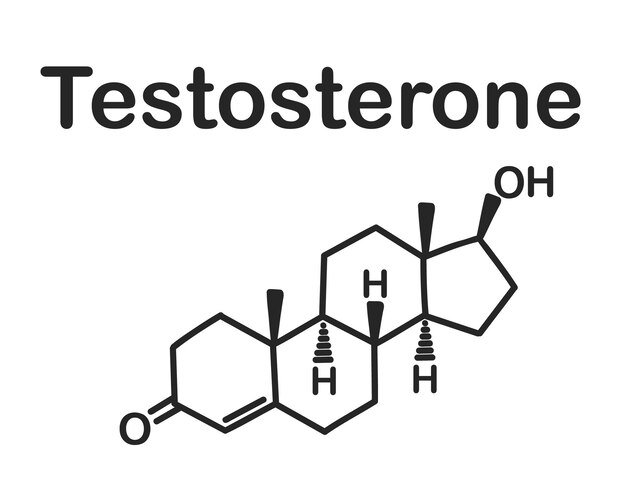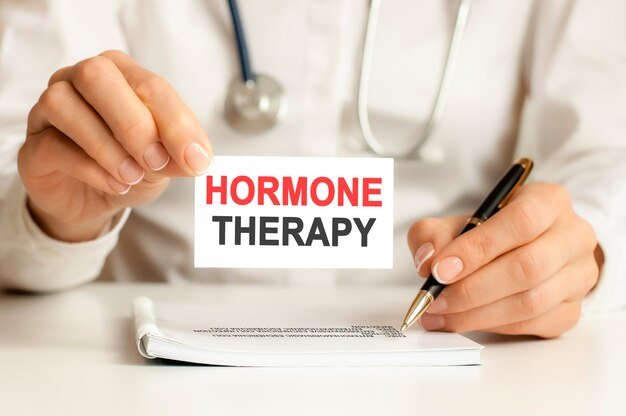Are you struggling between Testosterone Pellets vs Injections? Briefly put, Testosterone pellets offer steady, long-lasting hormone release, while injections provide a rapid but shorter-term boost in testosterone levels.
In the world of hormone replacement therapy, the choice between testosterone pellets and injections can be perplexing. Both options have their merits and demerits, and selecting the right one depends on various factors. This article aims to provide an in-depth comparison between testosterone pellets and injections, helping you make an informed decision about the most suitable therapy for your needs.
The Science Behind Testosterone

Among various hormones produced by human body, testosterone is a comparatively vital hormone produced primarily in the testes of males and, to a lesser extent, in the adrenal glands. It plays a fundamental role in the development and maintenance of male characteristics, such as muscle mass, facial hair, and a deep voice. However, testosterone is not exclusive to males; females also produce it, albeit in smaller amounts.
The production of testosterone is regulated by a complex feedback loop involving the brain and the testes. The hypothalamus releases gonadotropin-releasing hormone (GnRH), which signals the pituitary gland to produce luteinizing hormone (LH) and follicle-stimulating hormone (FSH). These hormones then stimulate the testes to produce testosterone.
Testosterone has a wide range of effects on the body, influencing not only physical traits but also mood, energy levels, and overall well-being. Understanding the science behind testosterone is essential for grasping the significance of hormone replacement therapy and the various options available.
Understanding Hormone Replacement Therapy

Hormone replacement therapy (HRT) is a medical treatment designed to restore hormonal balance in individuals with hormone deficiencies. It is commonly used in cases of low testosterone levels, particularly in older men, to alleviate symptoms associated with low testosterone.
HRT involves the administration of hormones, such as testosterone, through various methods like injections, gels, patches, or pellets. The goal is to replace or supplement the body’s natural hormone production to achieve optimal hormonal levels.
Understanding hormone replacement therapy is crucial because it offers an effective solution for managing hormonal imbalances, improving quality of life, and addressing the symptoms that can arise due to low hormone levels. It’s essential to consult with a healthcare provider to determine the most suitable HRT approach based on individual needs and health considerations.
Testosterone Pellets vs Injections: Brief Introduction
Testosterone Pellets: The Lowdown
Testosterone pellets, also known as testosterone implants, are tiny, solid cylinders containing crystalline testosterone. These pellets are implanted under the skin, typically in the buttocks or abdomen, during a minor surgical procedure. The pellets release a steady, low dose of testosterone into the bloodstream over several months.
Testosterone Injections: The Lowdown
Testosterone injections involve the direct injection of testosterone into the muscle tissue. The injections can be administered by a healthcare provider or self-administered at home, typically on a weekly or bi-weekly schedule.
Testosterone Pellets vs Injections: The Process
Testosterone Pellets
The process of receiving testosterone pellets involves a few straightforward steps:
- Consultation with a Healthcare Provider: It all begins with a consultation with a healthcare provider who specializes in hormone therapy. During this appointment, you’ll discuss your symptoms, medical history, and whether testosterone therapy is a suitable option for you.
- Hormone Assessment: Your healthcare provider will conduct hormone level assessments, which may include blood tests, to determine if you have low testosterone levels that warrant treatment.
- Customized Treatment Plan: If it’s decided that testosterone pellet therapy is appropriate for you, a personalized treatment plan will be developed. This plan will outline the dosage and frequency of pellet insertions based on your specific needs.
- Pellet Insertion: The actual pellet insertion is a minor surgical procedure that typically takes place in a healthcare provider’s office. A small incision is made in the skin, usually in the buttocks or abdomen, and the pellets are placed under the skin. The incision is then closed with sutures or adhesive strips.
- Recovery and Monitoring: After the procedure, you’ll be monitored for a brief period to ensure there are no immediate complications. You can usually return to your regular activities shortly after the insertion.
- Long-Term Effects: Testosterone pellets release a steady, low dose of hormone into the bloodstream over several months. During this time, your healthcare provider will monitor your progress and may make adjustments to your treatment plan if necessary.
Testosterone Injections

Receiving testosterone injections involves the following steps:
- Consultation with a Healthcare Provider: As with pellet therapy, the process begins with a consultation with a healthcare provider who specializes in hormone therapy. Your symptoms and medical history will be discussed to determine if testosterone injections are appropriate.
- Hormone Assessment: Hormone level assessments, including blood tests, are conducted to evaluate your testosterone levels and determine the need for treatment.
- Customized Treatment Plan: Your healthcare provider will create a personalized treatment plan, specifying the dosage and frequency of testosterone injections based on your individual requirements.
- Injection Administration: Testosterone injections can be administered by a healthcare professional or self-administered at home. If you choose self-administration, your healthcare provider will provide detailed instructions on the proper technique.
- Monitoring and Adjustments: Regular follow-up appointments are essential to monitor your progress and assess the effectiveness of the treatment. Your healthcare provider may make dosage adjustments as needed to maintain optimal hormone levels.
Both testosterone pellet therapy and injections are effective methods of hormone replacement, and the choice between them depends on your preferences and medical considerations.
Testosterone Pellets vs Injections: Comparing Advantages
Testosterone Pellets
Consistent Hormone Levels: Pellets provide a steady release of testosterone, ensuring consistent hormone levels in the body. This stability can result in fewer mood swings and better emotional well-being.
Convenience: After the initial implantation, there’s no need for frequent injections or daily applications. This convenience can significantly improve the quality of life for individuals seeking hormone replacement therapy.
Fewer Side Effects: Pellets minimize the fluctuations in hormone levels, reducing side effects like mood swings, which are often associated with injections.
Testosterone Injections
Quick Absorption: Injections provide an immediate boost in testosterone levels. This rapid onset can be beneficial for individuals looking for fast relief of symptoms associated with low testosterone.
Adjustable Dosage: The dosage can be easily adjusted by healthcare professionals to suit individual needs. This flexibility allows for fine-tuning of treatment.
Cost-Effective: Injections are often more cost-effective in the long run. The affordability of injections may make them a more attractive option for some patients.
Testosterone Pellets vs Injections: Disadvantages
Testosterone Pellets
Invasive Procedure: The implantation process requires a minor surgical procedure, which can be uncomfortable for some individuals. However, the discomfort is usually short-lived.
Non-Reversible: Once implanted, the pellets cannot be removed until they have fully dissolved. This means that if you experience adverse effects, you must wait for the pellets to dissipate.
Cost: Testosterone pellet therapy can be more expensive upfront than injections. However, considering the extended duration of effectiveness, it may prove cost-effective in the long term.
Testosterone Injections
Fluctuating Levels: Testosterone levels can spike shortly after injections and decrease before the next dose. These fluctuations may lead to mood swings and varying energy levels.
Inconvenience: Frequent injections may not be suitable for everyone and can be bothersome for those who dislike needles or have a fear of injections.
Potential Side Effects: Rapid fluctuations in hormone levels may lead to mood swings, acne, and changes in blood pressure. Close monitoring by a healthcare provider is essential to manage and mitigate these potential side effects.
Testosterone Pellets vs Injections: Side Effects

Testosterone Pellets:
- Infection at the Implantation Site: As with any surgical procedure, there is a risk of infection at the site where the pellets are implanted. This risk is relatively low, but it’s essential to keep the area clean and follow your healthcare provider’s post-implantation care instructions to minimize it.
- Extrusion or Migration: In rare cases, the pellets may move from their original placement, leading to discomfort or the need for surgical correction. This risk is typically minimized when the procedure is performed by an experienced healthcare provider.
- Skin Changes: Some individuals may experience skin changes, such as redness or itching, around the implantation site. These symptoms are usually mild and resolve on their own.
- Hormonal Imbalance: While testosterone pellets aim to provide a consistent hormone level, there is still the possibility of overstimulation or under-stimulation of testosterone production, leading to hormonal imbalances. Regular monitoring by a healthcare provider can help manage this risk.
Testosterone Injections
- Injection Site Reactions: It’s common to experience pain, redness, or swelling at the injection site, especially if injections are administered frequently. These reactions are usually temporary and mild.
- Fluctuating Mood: Testosterone levels can peak shortly after an injection and decline before the next one. This hormonal fluctuation can lead to mood swings, irritability, or emotional instability in some individuals.
- Acne: Elevated testosterone levels can stimulate increased oil production in the skin, potentially leading to acne breakouts, especially in individuals prone to this condition.
- Cardiovascular Effects: Some studies suggest that testosterone therapy, including injections, may increase the risk of cardiovascular issues such as high blood pressure and blood clot formation. However, the relationship between testosterone therapy and cardiovascular health is still being studied.
- Elevated Red Blood Cell Count: Testosterone therapy, particularly in high doses or when administered for an extended period, can lead to an increase in red blood cell count, which may contribute to thicker blood. This can pose a risk of clot formation in some individuals.
- Breast Tenderness or Enlargement: Testosterone injections can sometimes lead to breast tenderness or enlargement (gynecomastia), especially in higher doses. This side effect may require dose adjustments or additional medications to manage.
It’s important to note that individual reactions to testosterone therapy can vary widely. Some individuals may experience none of these side effects, while others may encounter several.
Testosterone Pellets vs Injections: Cost Comparison
When considering testosterone replacement therapy, cost can be a significant factor in your decision-making process. It’s essential to understand the cost differences between testosterone pellets and injections:
Testosterone Pellets
Initial Cost: Testosterone pellet therapy typically has a higher initial upfront cost at around $800. This includes the expense of the pellets themselves, the minor surgical procedure to implant them, and any associated medical fees.
Long-Term Considerations: While the initial cost is higher, it’s important to note that testosterone pellets can last for several months, often up to six months. This means you’ll have fewer visits to the healthcare provider for treatments, which can offset the initial expense.
Testosterone Injections
Initial Cost: Testosterone injections tend to have a lower initial cost compared to pellets, in between $50 and $100. The primary expenses include the medication itself and, if applicable, any fees associated with healthcare provider visits for injection administration.
Ongoing Costs: However, it’s essential to factor in the ongoing expenses associated with injections. Since injections are typically administered more frequently (weekly or bi-weekly), the cumulative cost of medications and healthcare provider visits over time may become significant.
Insurance Coverage: It’s worth checking whether your health insurance plan covers testosterone replacement therapy. Some plans may cover a portion of the costs, helping to reduce the financial burden.
In summary, while testosterone pellet therapy may have a higher initial cost, it offers the advantage of fewer treatment sessions over an extended period. On the other hand, testosterone injections have lower initial expenses but may accumulate higher costs over time due to more frequent treatments
Managing Hormone Levels: Diet and Lifestyle

Maintaining healthy hormone levels is crucial for overall well-being, and you can influence these levels through your diet and lifestyle choices:
Balanced Diet
1. Nutrient-Rich Foods: Incorporate nutrient-dense foods into your diet, including fresh fruits, vegetables, lean proteins, and whole grains. These foods provide essential vitamins and minerals that support hormone production.
2. Healthy Fats: Include sources of healthy fats like avocados, nuts, and fatty fish in your diet. These fats are crucial for hormone synthesis.
3. Limit Processed Foods: Minimize the consumption of processed foods high in sugars and unhealthy fats, as they can disrupt hormone balance.
Regular Exercise
1. Strength Training: Engage in strength training exercises, which can help boost testosterone levels in both men and women. Resistance workouts like weightlifting stimulate muscle growth and hormone production.
2. Cardiovascular Exercise: Aerobic activities like jogging, swimming, or cycling can promote overall hormonal health and improve mood.
3. Consistency: Maintain a regular exercise routine, as inconsistent physical activity can lead to hormonal fluctuations.
Stress Management
1. Relaxation Techniques: Practice stress-reduction techniques such as deep breathing, meditation, or yoga. Chronic stress can disrupt hormone levels, so managing stress is essential.
2. Adequate Sleep: Ensure you get enough quality sleep, as sleep is crucial for hormone regulation. Aim for 7-9 hours of uninterrupted rest each night.
Avoid Harmful Substances
1. Limit Alcohol: Excessive alcohol consumption can negatively impact hormone balance. Moderation is key.
2. Quit Smoking: Smoking is associated with hormonal disruptions. Quitting can lead to improvements in hormone levels and overall health.
Hydration
Staying adequately hydrated supports the body’s overall functions, including hormone regulation. Aim to drink plenty of water throughout the day.
Regular Health Check-ups
Visit a healthcare provider regularly for check-ups and hormone level assessments. They can provide guidance on hormone replacement therapy if necessary.
Testosterone Pellets vs Injections: Conclusion
In the world of hormone replacement therapy, the choice between testosterone pellets and injections is not one-size-fits-all. Each option has its unique advantages and disadvantages, making it essential to weigh them carefully. Ultimately, the decision should be made in consultation with a qualified healthcare provider who can tailor the treatment to your specific needs.
[youtube https://www.youtube.com/watch?v=aqcsHFbdOrY?si=gzrF2Q1zKrX0ToWJ&w=560&h=315]Testosterone Pellets vs Injections: FAQs
Are testosterone pellets better than injections?
The effectiveness of testosterone pellets versus injections depends on individual preferences and medical needs. Pellets offer consistent hormone levels over time, while injections provide quicker results with more frequent dosing. Neither is inherently “better” than the other; it’s about what aligns with your goals and lifestyle.
Are testosterone pellets the best?
Whether testosterone pellets are the best option depends on your specific circumstances. They can be highly effective for some individuals seeking long-lasting hormone therapy, but the “best” choice varies from person to person. Consult with a healthcare provider to determine the most suitable treatment for you.
Are testosterone pellets worth it?
The worthiness of testosterone pellets depends on factors like your symptoms, lifestyle, and medical history. If they align with your needs and you prefer less frequent treatments, they can be a valuable option. It’s essential to weigh the benefits against the cost and potential side effects, as well as consult with a healthcare provider for personalized advice.
Is injectable testosterone more effective?
Injectable testosterone can provide faster results due to its immediate absorption, making it suitable for those looking for rapid symptom relief. However, effectiveness depends on individual response and preference. Both pellet and injection forms can be effective when appropriately administered.
What is the downside of hormone pellets?
The downside of hormone pellets includes the invasive insertion procedure, potential for extrusion or migration, and the non-reversible nature of the treatment until pellets fully dissolve. Additionally, some individuals may find the initial cost to be higher compared to other forms of testosterone therapy.
Do you gain weight on testosterone pellets?
Testosterone therapy can influence body composition by increasing muscle mass and potentially reducing fat. However, weight changes vary among individuals. Weight gain or loss is often influenced by diet, exercise, and other lifestyle factors, in addition to hormone therapy.
Do testosterone pellets reduce belly fat?
Testosterone therapy, including pellets, can contribute to changes in body composition by increasing muscle mass and potentially reducing fat. However, its impact on belly fat specifically may vary among individuals, and lifestyle factors play a significant role.
What form of testosterone is best?
The “best” form of testosterone varies depending on individual needs and preferences. Testosterone can be administered through pellets, injections, gels, patches, and other methods. Consult with a healthcare provider to determine the most suitable form based on your goals and medical history.
How quickly do testosterone pellets work?
Testosterone pellets typically take a few weeks to several months to reach their full effectiveness. Initial benefits may be noticeable within the first few weeks, but it’s essential to allow time for the pellets to release testosterone steadily into the bloodstream.
What not to do after getting pellets?
After receiving testosterone pellets, avoid strenuous physical activity, swimming, or soaking in hot tubs for a few days. Follow your healthcare provider’s post-procedure instructions carefully to minimize the risk of complications.
Can you just stop testosterone pellets?
Discontinuing testosterone pellet therapy should be done under the guidance of a healthcare provider. Sudden cessation can lead to hormonal imbalances. Your provider can create a plan to taper off the treatment if necessary.
What happens when you stop testosterone pellets?
When you stop testosterone pellet therapy, your hormone levels will gradually return to their baseline levels. The rate of change may vary among individuals. Be prepared for potential changes in symptoms as your body adjusts.
What is the safest form of testosterone?
The safety of testosterone therapy depends on various factors, including proper administration, monitoring, and individual health. No single form is inherently safer than others. The safety of any form of testosterone therapy is best determined in consultation with a healthcare provider.
Do you have to inject testosterone forever?
The duration of testosterone therapy varies from person to person. Some individuals may need lifelong hormone replacement, while others may use it for a specific period. It depends on the underlying medical condition and treatment goals. Your healthcare provider will determine the most suitable timeline.
Do testosterone injections make harder?
Testosterone injections are not typically associated with sexual hardness. However, they can improve libido and sexual function in individuals with low testosterone levels, potentially enhancing overall sexual well-being. Individual responses may vary.
References
- MedlinePlus: (medlineplus.gov)
- Cleveland Clinic: (my.clevelandclinic.org)
- The Endocrine Society: (www.endocrine.org)


